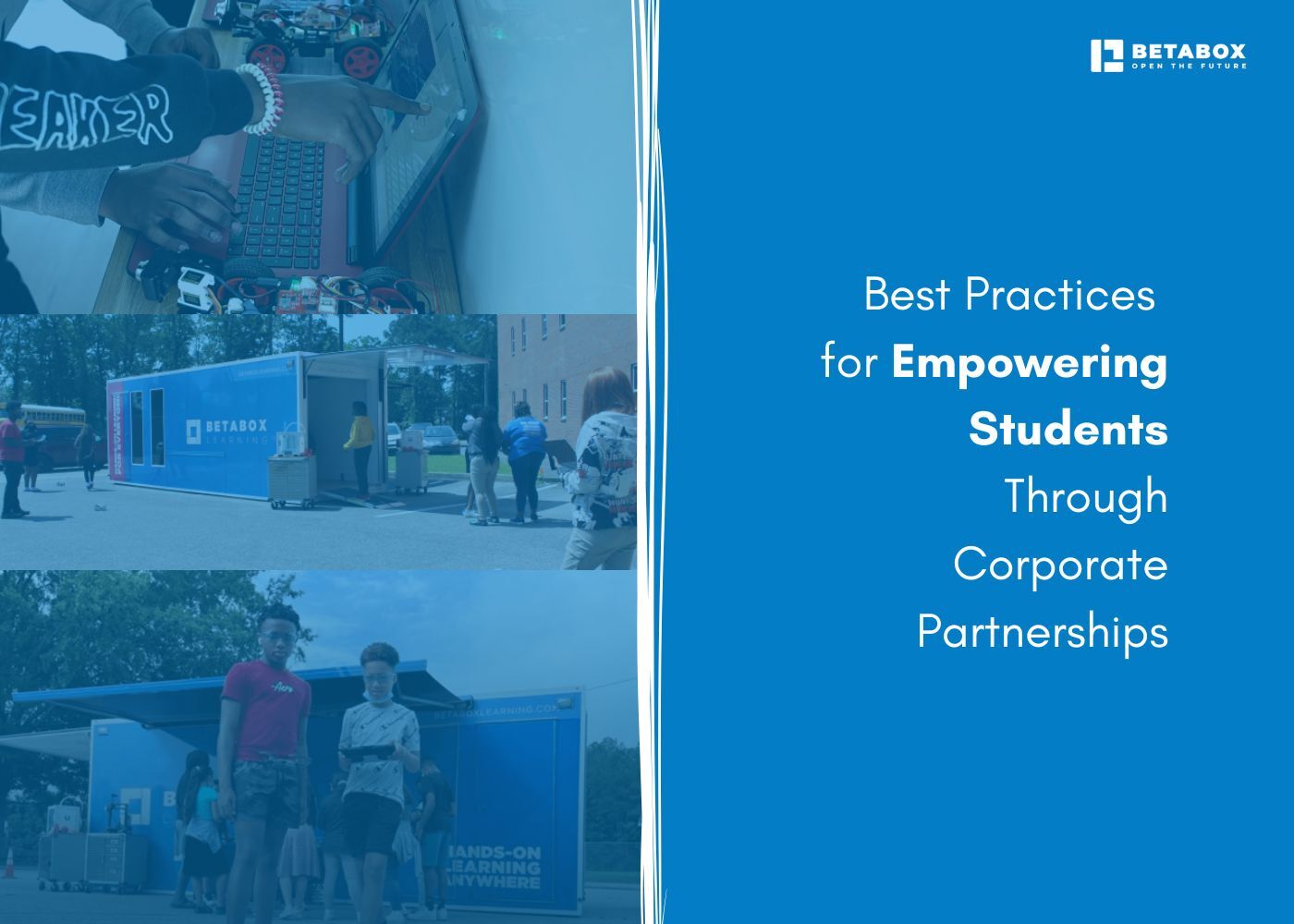
Education leaders and corporate partners share a rising mandate. Help students gain real skills, confidence, and clarity about their future. Make learning feel connected to authentic problems. Do it at scale, and do it equitably.
This article translates that mandate into a practical playbook. You will find best practices for corporate partnerships in education, concrete ideas that support empowering students through partnerships, and ways to design student workforce readiness partnerships that are durable, measurable, and fair.
Throughout, we keep the focus on what improves learning, then highlight where a partner like Betabox can plug in without creating extra burden for schools. Betabox brings mobile, on-campus experiences, hands-on projects, and career reflection tools that are built for districts and impact partners who want to expand access quickly and responsibly.
Strong industry-education engagement strategies shorten the distance between what students learn and what they will do. When companies co-design learning experiences with educators, students see how concepts transfer to tasks, tools, and teams. That relevance raises engagement and helps students form a durable science and tech identity.
There is also a system benefit. Many schools, especially in rural and low-wealth areas, face resource gaps that limit access to quality STEM experiences. Responsible collaboration can narrow those gaps by moving experiences and materials onto campus, supporting teachers, and ensuring consistent exposure across grades.
Betabox frames its mission around opening the path into technology for all students and has grown a national footprint serving hundreds of districts with on-campus programs that make STEM access more equitable.
Student empowerment grows when learners have agency, authentic tasks, and supportive mentorship. Partnerships create those conditions by:
The best education-corporate collaboration best practices start from the curriculum. List the capabilities students need, then invite companies to pressure-test tasks and artifacts against real workflows.
That turns standards into projects that feel like a work product. It also helps teachers connect abstract concepts to tools and roles students will meet later. Betabox operationalizes this bridge with Onsite Field Trips that bring hands-on tech exploration to a school’s parking lot and Hands-On Projects that slot into class or afterschool time.
Workforce readiness is not a single course. It is a portfolio of demonstrations. Students should show they can investigate a problem, select the right tools, collaborate, and communicate results. Public artifacts, micro-credentials, and supervisor feedback from mentors make these demonstrations visible.
Betabox’s research summary highlights immediate gains from time-bound, high-engagement sessions, including a reported 25 percent rise in STEM interest and measurable improvement in content knowledge after a one-hour session, which supports a scaffolded approach to readiness.
Start with a capability map. Identify the few cross-cutting skills that matter across roles, such as problem framing, systems thinking, safe tool use, data interpretation, and technical writing. Invite partners to review unit plans and suggest authentic deliverables.
Companies should not dictate standards. They contribute current context and sample artifacts that make lessons concrete.
Practical moves:
Betabox’s Projects catalog can serve as a ready-to-run backbone for units that need to feel authentic while staying manageable for teachers.
Internships and apprenticeships give students time on task. Mentorship adds guidance and belonging. Combine the three in stages that match student readiness:
Publish clear expectations, safeguarding practices, and reflective prompts. Students should record tasks, decisions, and tools used, then translate that evidence into a portfolio. Where on-site placements are limited, bring “work” to campus through partner projects.
Betabox’s Onsite Field Trips format is designed to reach entire grade bands quickly, which can serve as an equitable entry point that feeds later internships.
Experiential learning corporate partnerships work when students do real work on a safe scale. Use case studies drawn from local industry and design challenges that combine multiple standards. Rotate roles so students practice technical and communication tasks. Close each cycle with a public share-out and rubric that emphasizes process quality, decision making, and the ability to explain tradeoffs.
Betabox’s hands-on resources and educator coaching exist to reduce prep time and logistics. Schools can implement project boxes, professional learning, and on-site experiences without building new labs from scratch.
Governance matters. Form a standing advisory group with educators, students, and partner representatives. Meet on a published cadence, review artifacts and outcomes, and prioritize changes for the next term. Keep minutes public inside the district so the work survives staffing changes. Where to start: invite your impact or CSR partners into a shared roadmap.
Betabox maintains a structured path for planning, funding, implementation, and measurement which helps districts and partners align expectations and timelines. To see how other districts and organizations are already doing this, explore these partner stories. If you manage CSR or community investment and want to fund equitable, on-campus experiences, see how partnerships are structured at Betabox Partners.
Corporate social responsibility education programs can do more than cut checks. The best CSR designs reduce friction for schools, put experiences where students are, and ensure consistent reach across campuses. This includes underwriting mobile labs, materials, and professional learning, then tying that support to shared impact measures.
Betabox’s mission and model reflect this approach, bringing experiences to schools, supporting first-year teacher success, and building pathways that connect hands-on learning to career discovery. The aim is equal access across zip codes, not one-off events.
Agree on a small set of student capabilities and artifacts that matter to both school and employer. Translate those into units, projects, and placements. Keep the scope teachable and the logistics simple. Districts can use Betabox’s four-phase approach, plan, fund, implement, measure, to keep initiatives on track across semesters.
Set participation rules that do not privilege a subset of students. Bring experiences to campus, rotate times to include all course schedules, and provide transportation or stipends for off-site opportunities.
Publish a simple opt-in pathway so families understand how to access each tier of opportunity. Betabox emphasizes on-site delivery, district-wide reach, and partnerships that specifically target underserved schools.
Pick measures that tie back to empowerment. Track interest shifts, content knowledge, artifacts completed, mentorship connections, and postsecondary steps. Use pre- and post- checks for short experiences, rubric scores for projects, and follow-up surveys for internships.
Betabox shares evaluation findings that report immediate gains in interest and knowledge after short sessions, which can serve as leading indicators to justify deeper investments.
As AI and automation reshape work, students need fluency with tools and the judgment to select and combine them. That calls for partnerships that prioritize capability development, authenticity, and equitable access. Districts and companies that publish their playbooks, share artifacts, and measure outcomes will set the pace.
Start with curriculum, build mentorship and paid experience, and keep reflection at the center. Anchor collaboration in governance and measurement so it endures. If you are a CSR leader or an education partner who wants to help districts deliver equitable, on-campus experiences at scale, explore Betabox Partners for models and next steps that fit your goals.
What are the best practices for corporate partnerships in education?
Align to capability-based learning goals, bring authentic tasks and artifacts into units, scaffold mentorship and work-based learning, formalize governance with an advisory group, and publish impact measures each term. Use partners to reduce school logistics, not add to them.
How do industry-education collaborations empower students?
They connect concepts to real tools and teams, provide role models, and create public artifacts students can own. Short on-campus experiences can lift interest and knowledge quickly, which then feeds deeper opportunities like internships.
Why is corporate input important in curriculum development?
Corporate input keeps tasks current and authentic. Partners supply context, examples, and feedback that help projects mimic real workflows while educators retain control of standards and assessment. Betabox’s project and field trip formats demonstrate how to operationalize this efficiently.
What role do internships and apprenticeships play in student readiness?
They provide extended practice under supervision, develop collaboration and communication, and generate evidence for portfolios and micro-credentials. When placements are limited, campus-based projects and partner critiques can provide equitable access to similar skills.
How can corporate social responsibility initiatives support education?
CSR can underwrite on-campus delivery, supplies, and teacher support so every student participates, not only those who can travel. It can also fund reflection tools that help students convert experiences into next steps.
What strategies ensure sustainable student-industry collaboration?
Define shared outcomes, use a phased plan for funding and implementation, ensure equitable participation rules, and measure leading indicators like interest and knowledge along with longer-term milestones. Betabox’s plan, fund, implement, measure approach is one model districts adopt.


Ready to learn how Betabox resources can be implemented at your school or District?
Book a Blueprint Call

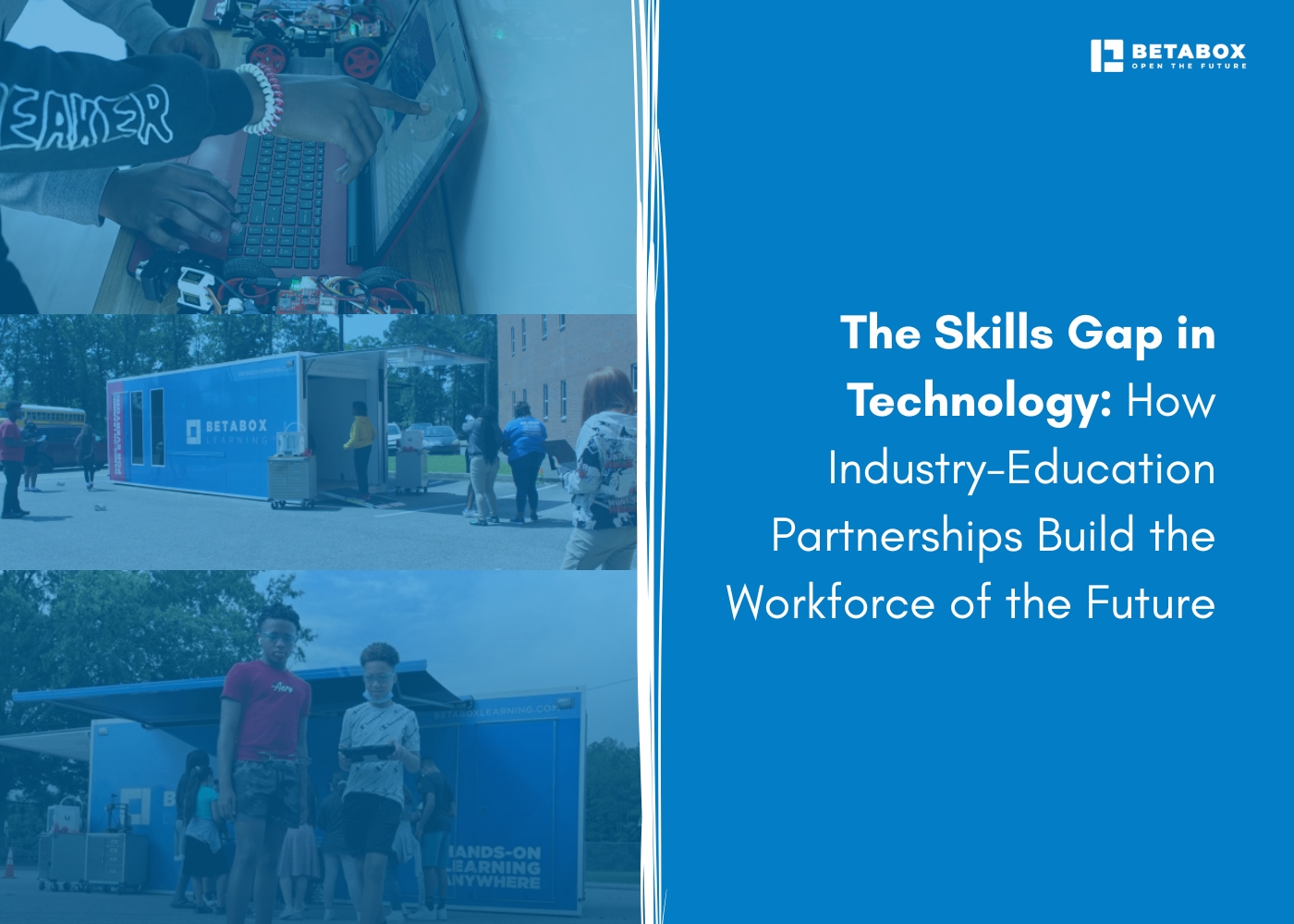

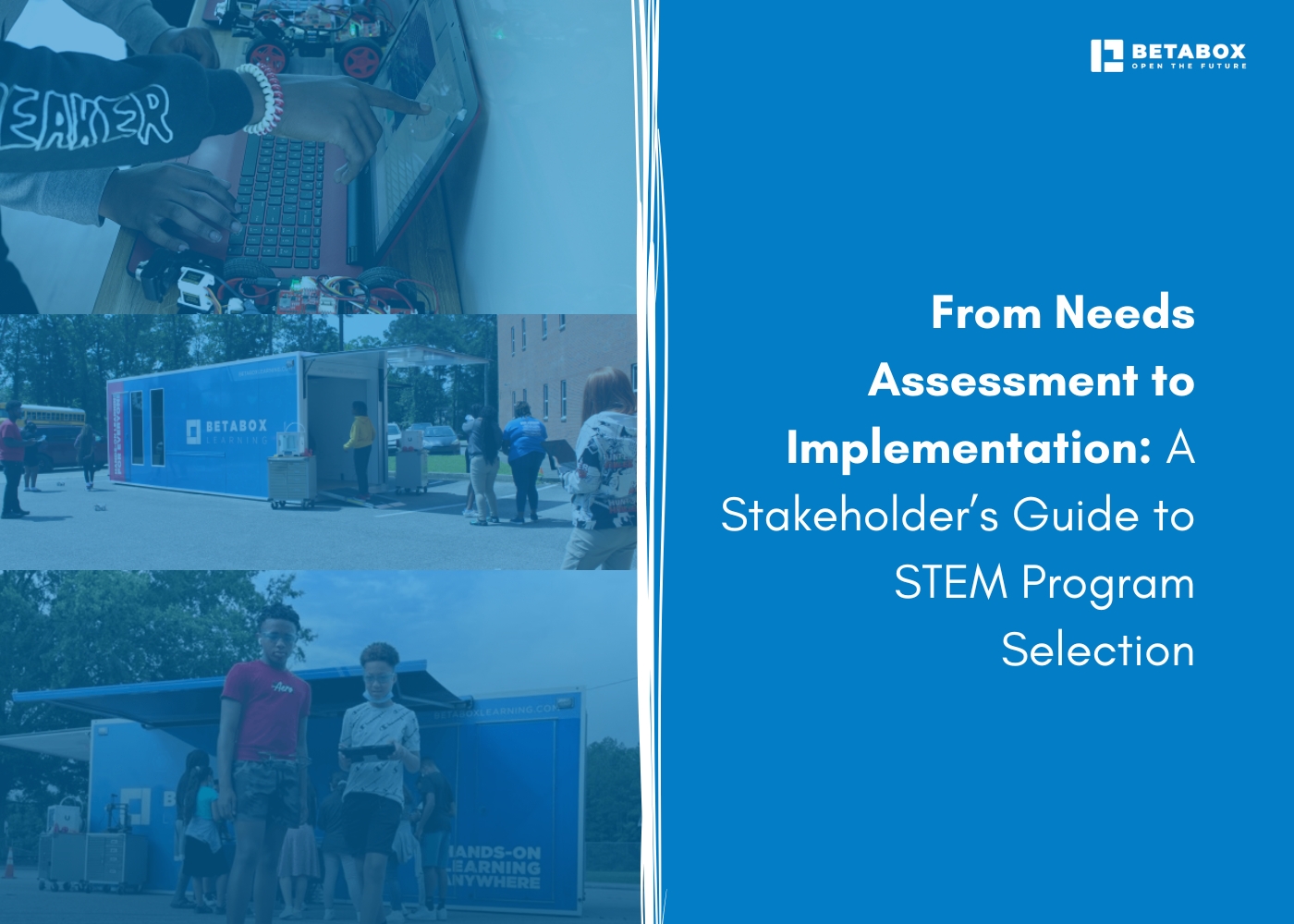

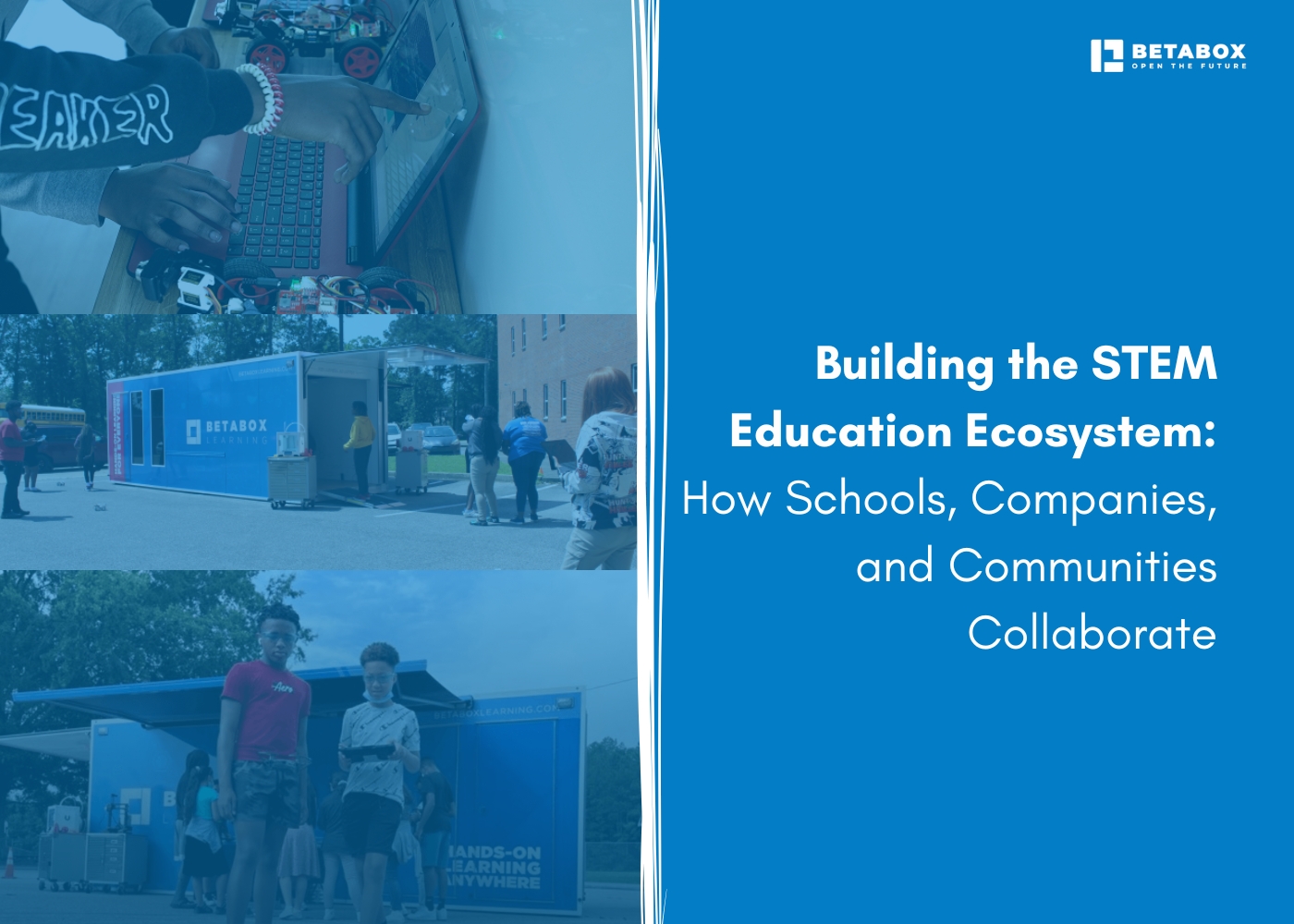

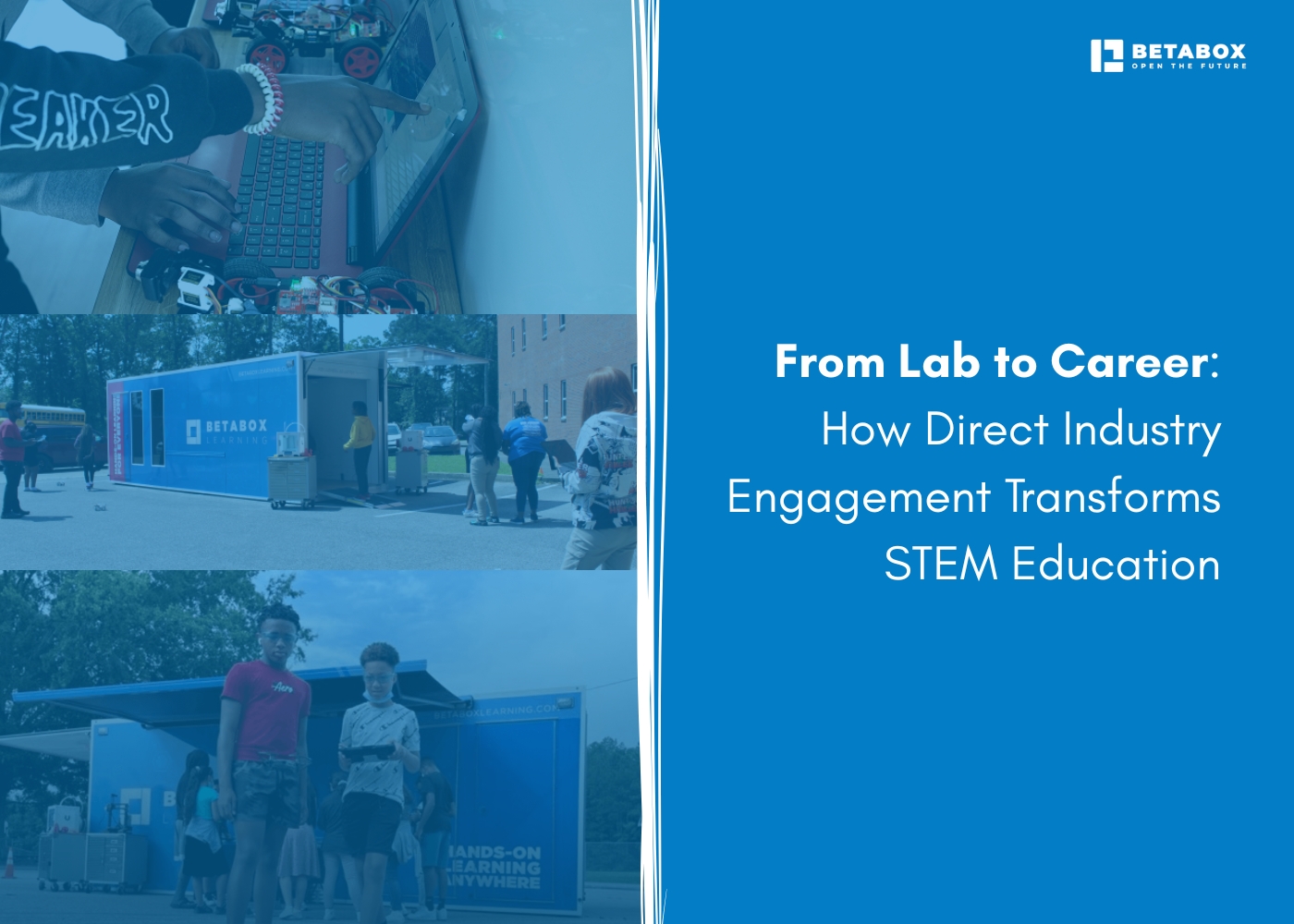

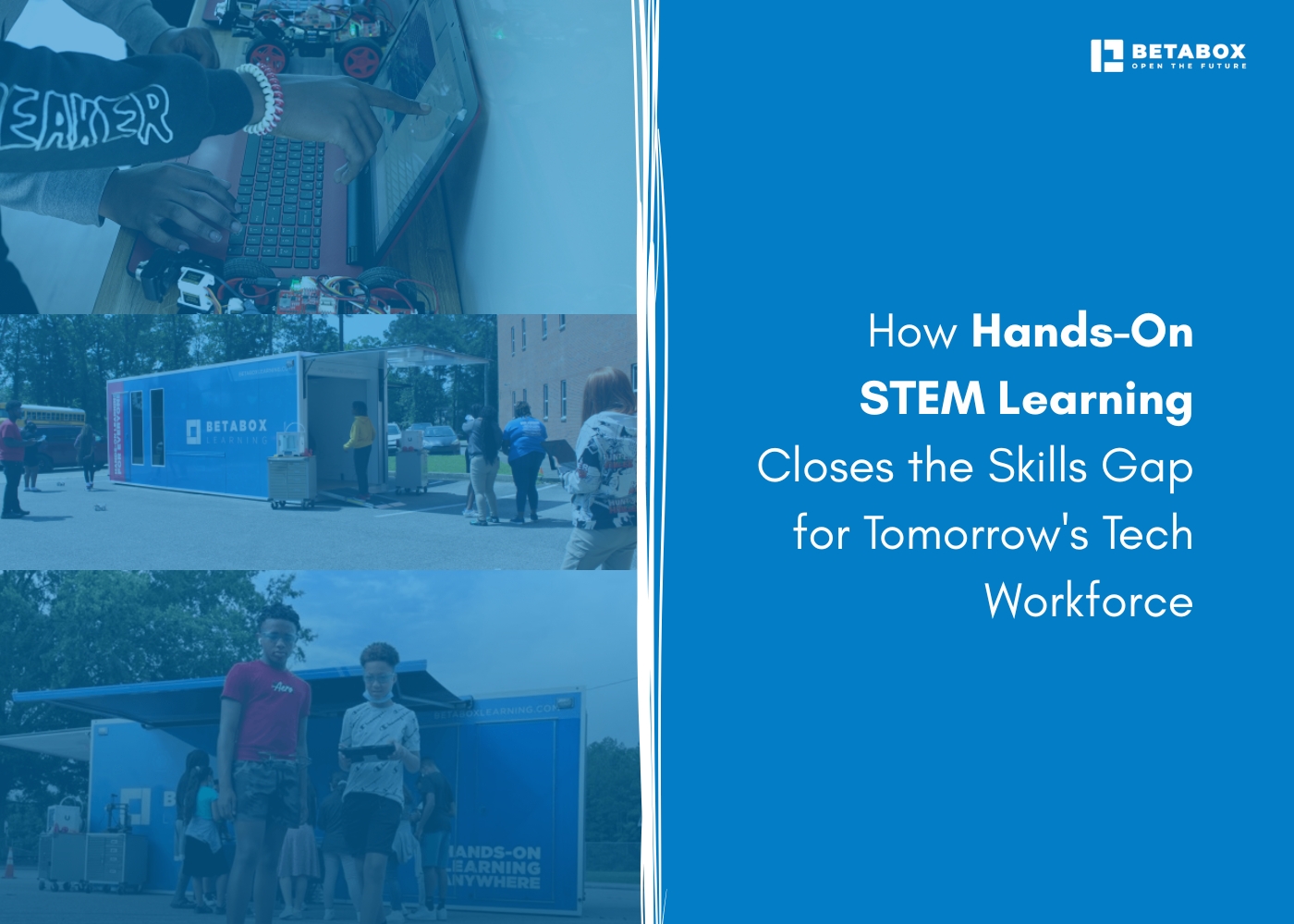

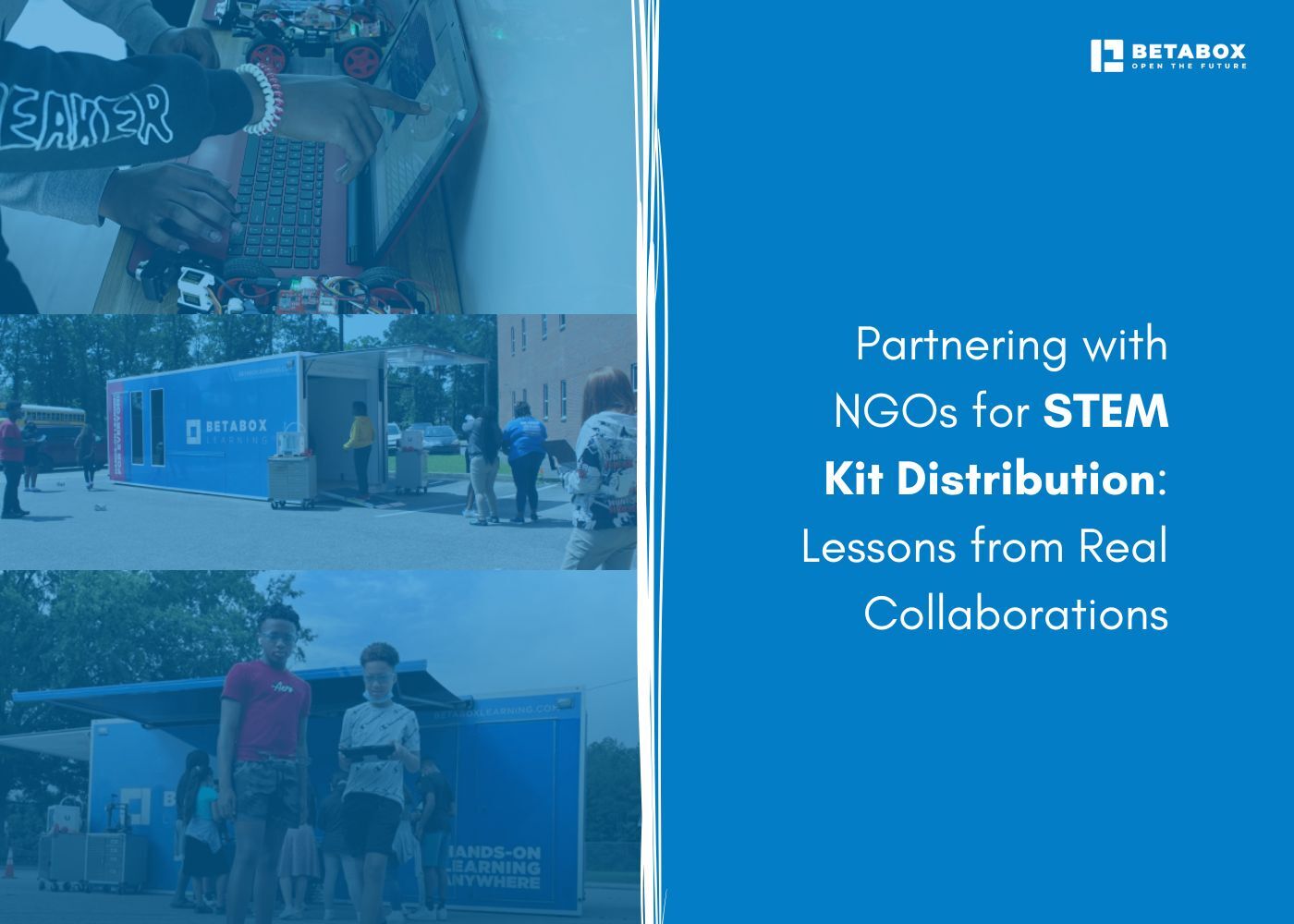

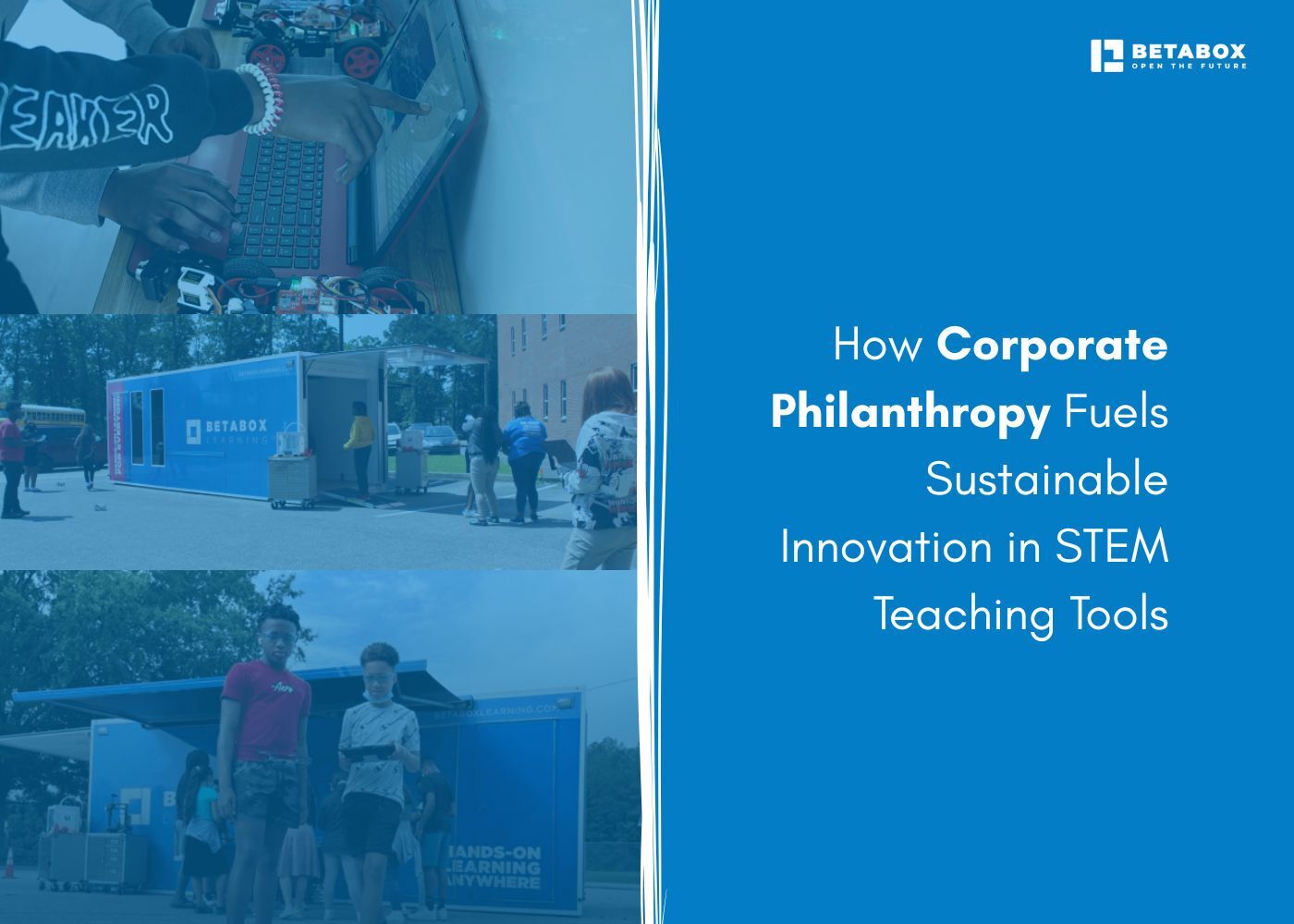

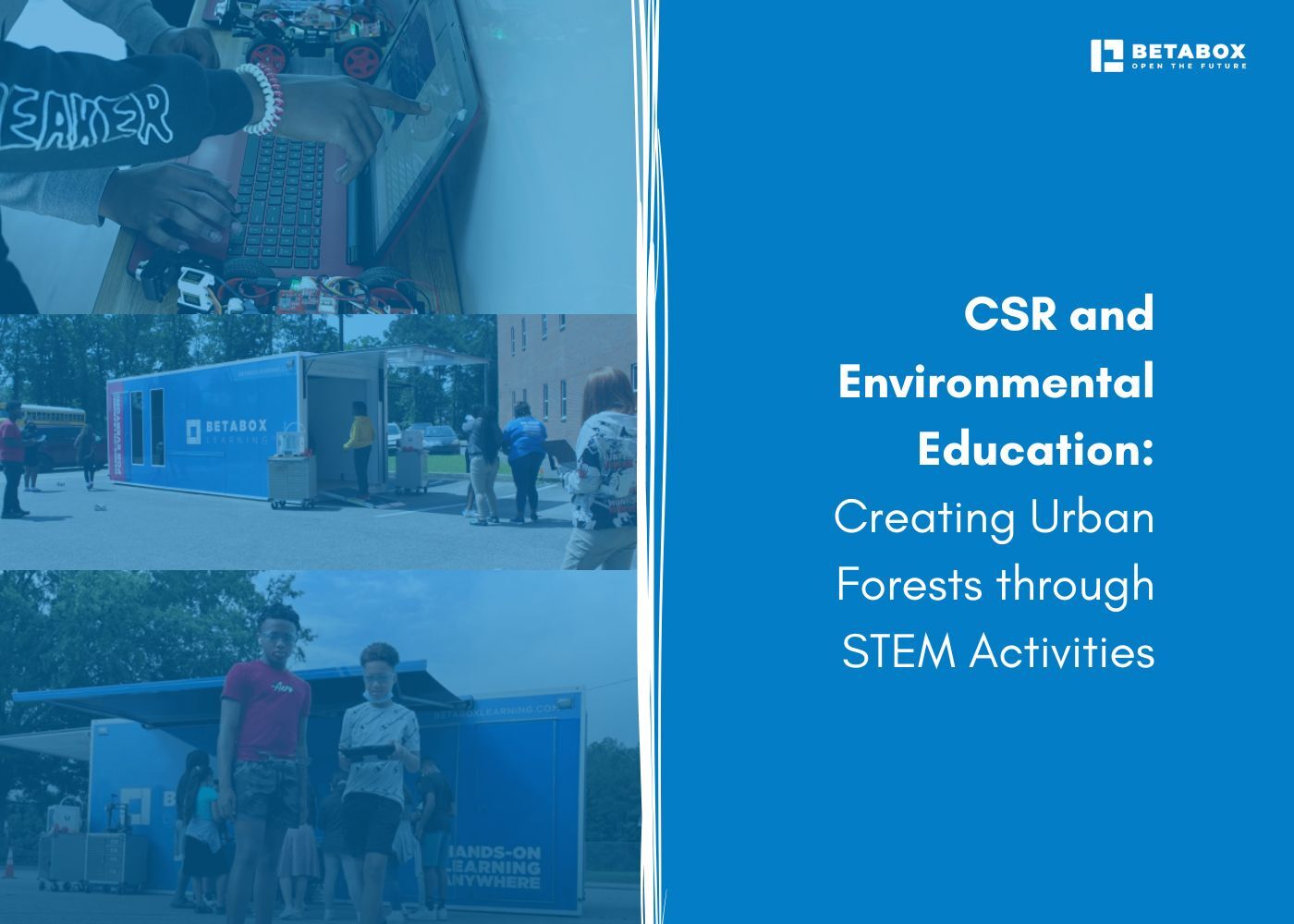

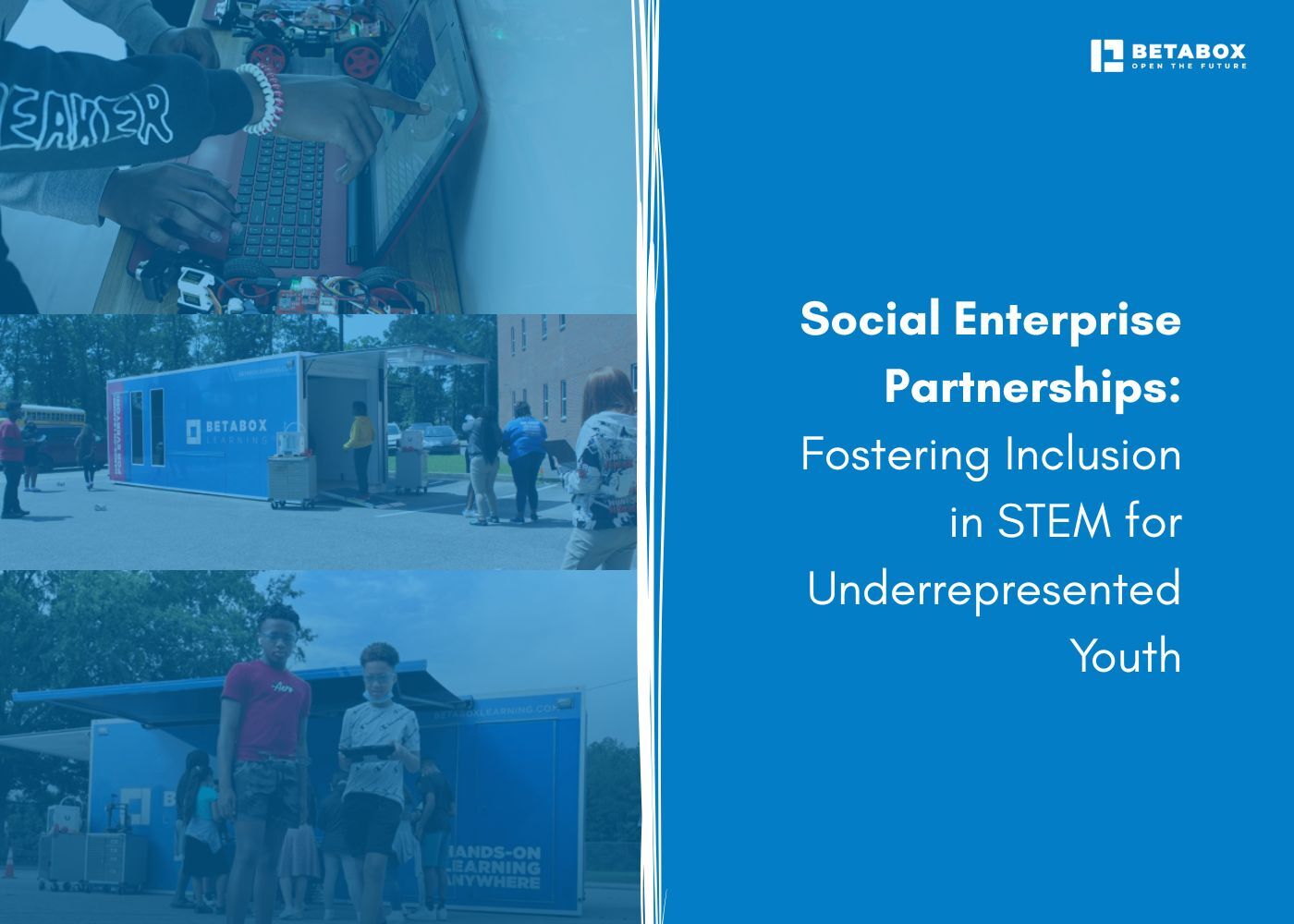

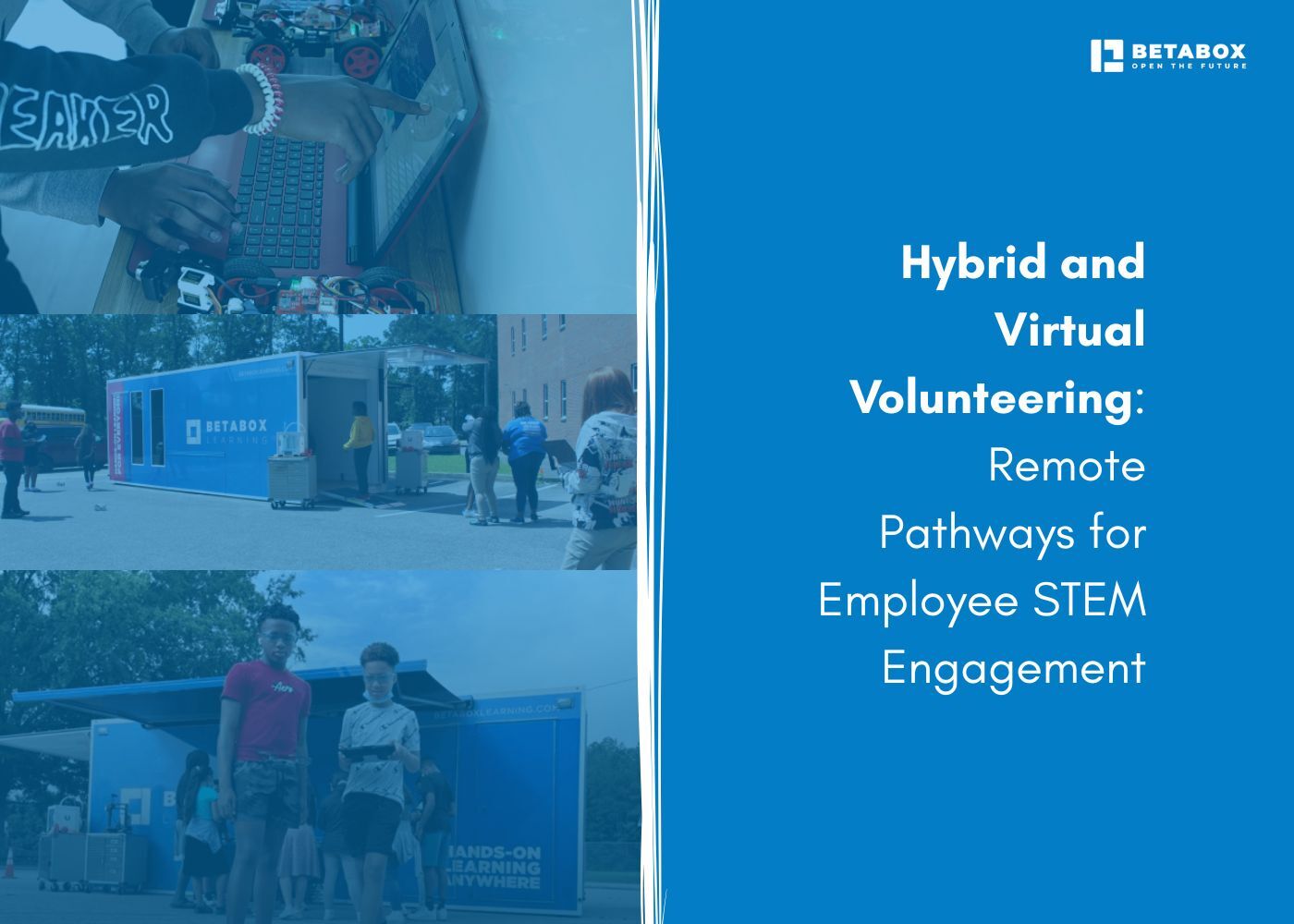

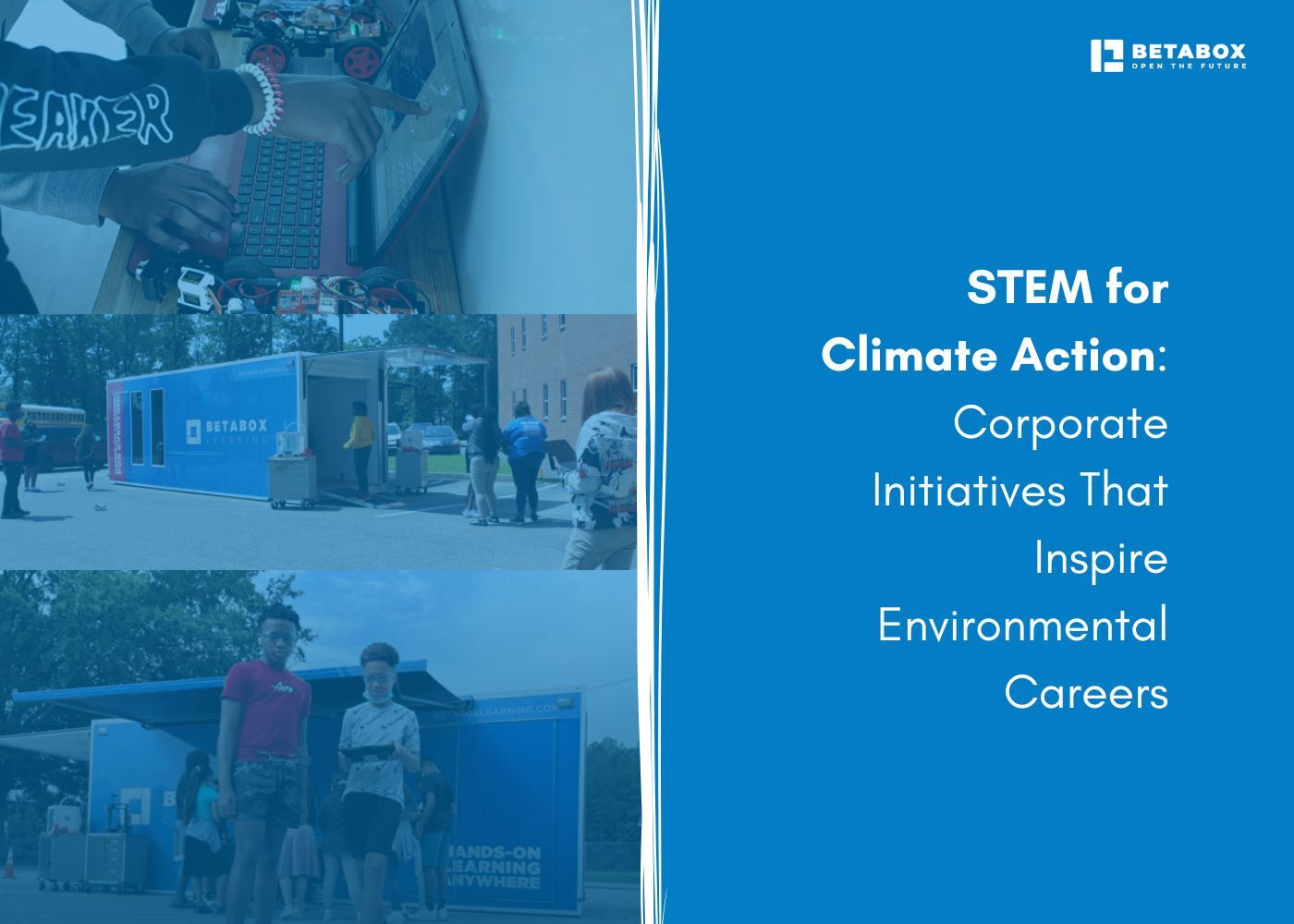



At Betabox Learning, we are passionate about making hands-on STEM curricula accessible to all students.

Join our newsletter to stay in the loop on all things Betabox and the future of STEM education.
By submitting your email address, you agree to our Privacy policy and Terms of Service. You can unsubscribe any time via the link in your email.
© 2025 Betabox. All Rights Reserved
